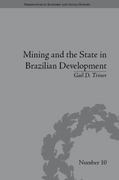Needhelpplease:
Questions.,
3. (12 points) Consider an inverse market demand function given by p = - +16, where g is the quantity demanded by the entire market. (a) Find the price elasticity of demand when p = 12. How elastic is demand at this price? (Is it unit elastic, perfectly elastic, elastic, perfectly inelastic, etc.?) (b) Find the price elasticity of demand when p = 0. How elastic is demand at this price? (Is it unit elastic, perfectly elastic, elastic, perfectly inelastic, etc.?)3. The demand function for a monopolistic firm is p = 250 - q - 0.02q2. (a) Find the price-elasticity of demand when q = 80. Is demand elastic or inelastic at this point? (b) Find the price for which demand has unit elasticity.3.1 UU, - 2U,UU, + UU; CO. Graph a typical indifference curve for the following utility Use this condition to check the convexity of the indifference functions, and determine whether they have convex curves for each of the utility functions in Problem 3.1. indifference curves (i.e., whether the MRS declines as x Describe the precise relationship between diminishing increases). marginal utility and quasi-concavity for each case. a. U(x, y) = 3x + y. b. U(x, y) = Vx .y. 3.3 c. U(x, y) = Vxty. Consider the following utility functions: d. U(x, y) = Vx - y. a. U(x, y) = xy. xy e. U(x, y) b. U(x, y) = xy. xty c. U(x, y) = In x + Iny. 3.2 Show that each of these has a diminishing MRS but that they In footnote 7 we showed that for a utility function for two exhibit constant, increasing, and decreasing marginal utility, goods to have a strictly diminishing MRS (i.e., to be strictly respectively. What do you conclude? quasi-concave), the following condition must hold:1 Explain why a life insurance company might need to set up non-unit reserves in respect of a unit-linked life assurance contract. 2 The following table shows (in f's) a profit testing calculation (with some of the entries missing) for three-year endowment assurance contracts issued to lives aged exactly 57 with a sum assured of 65,000 payable at the end of the year of death. Outgo terms are shown as negative entries. Expected Expected cost cost of death Profit Year Premium Expenses Interest of increasing and maturity vector reserves (* ) claims 1 1,530 -50 ? ? ? -51 2 1,530 ? ? 21 3 1,530 ? ? 45 The mortality probability at each age is 1%. The rate of interest earned on cashflows and reserves is 6%. Reserves are calculated using an interest rate of 4%. The reserves are zero at the start and end of the contract. The interest earned on the reserve in the third year is $195. (i) Complete the table. (ii) Calculate the internal rate of return. (wii) Explain the effect that changing to a weaker reserving basis would have on the internal rate of return. (iv) Calculate the net present value using a risk discount rate of 7%. (v) Explain the effect that changing to a weaker reserving basis would have on the net present value. (* ) Allowing for interest earned on reserves










